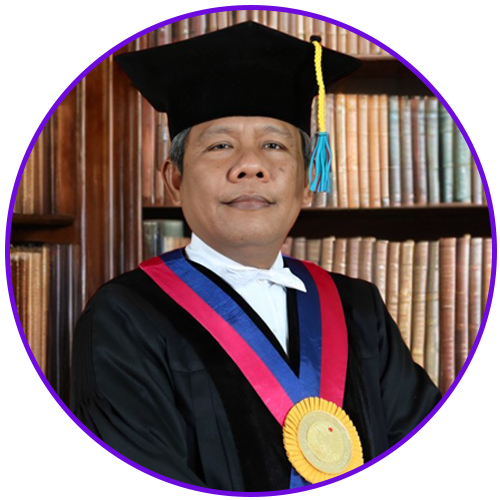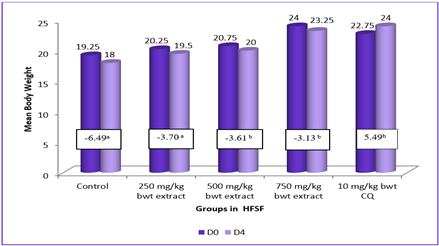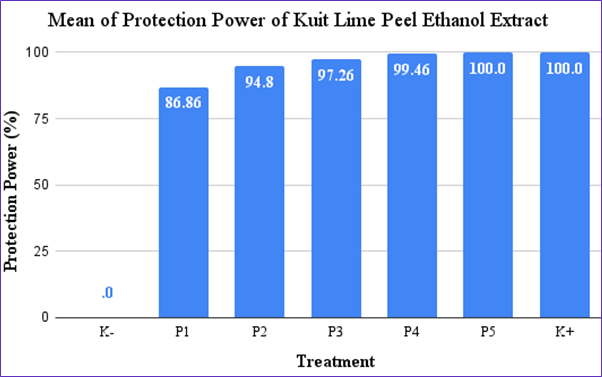Ectoparasite Infestation on Beef Cattle (Bos Indicus) in Kendit Sub-District, Situbondo District
Downloads
The purpose of this study was to determine the type and percentage of ectoparasites attacking the cattle cow in the Kendit Sub-District, Situbondo District. The research was conducted from July to September 2020 with 100 samples of cow taken. The identification of ectoparasites was carried out at The Laboratory of the Animal Health Center of Situbondo Regency. This study was survey with a cross-sectional design. This study found several ectoparasites of the type of flies that infested the cattle cow: Musca domestica 29.20%, Haematobia irritans 58.96%, Stomoxys calcitrans 2.82%, Tabanus rubidus 0.42%, Tabanus megalops 0.56%, Hippobosca maculata 0.14%. In addition, this study also found ectoparasites of fleas that attacked the cattle cow, among others Bovicola bovis 2.12%, and Haematopinus eurysternus 5.78%. In this study, the dominant type of fly ectoparasite was Haematobia irritans 58.96% and the dominant ectoparasite from flea was Haematopinus eurysternus 5.78%. The suggestions for this research were this research should be continued with a longer time, the fishing method must be more varied because the more fishing methods used, the higher diversity results and it is advisable to maintain cage sanitation, improve maintenance management, and the cleanliness of cattle sheds surroundings to maintain cattle condition.
Awaluddin, A. N. 2017. Identifikasi Morfologi Haematopinus sp pada Sapi Limousin Asal Karanganyar dan Sapi Frish Holland (FH) asal Boyolali. Jurnal Ilmiah Inovasi, 109-113.
Barros, A. 2001. Dynamics of Haematobia irritans irritans (Diptera: Muscidae) Infestation on Nelore Cattle in the Pantanal, Brazil. Mem. Inst. Oswaldo Cruz. 96(4): 445-450.
BPS Kabupaten Situbondo. 2019. Kecamatan Kendit Dalam Angka 2019. https://situbondokab.bps.go.id/statictable/2019/07/29/581/luas-wilayah-menurut-kecamatan-di-kabupaten-situbondo-2017.html.
Cameron, 2002. Survey Toolbox Aquatic Animal Disease. Practical Manual and Software Package. ACIAR Monograph (94).
Desquesnes, M. W. 2018. Guidelines for User-Friendly Iconographic Description of Hematophagous Flies' External Morphology application to the Identification of Tabanus rubidus. Journal of Asia-Pacific Entomology, 6-13.
Estuningsih, S. 2007. Stephanofilariasis (Kaskado) pada Sapi. Wartazoa, 172-177.
Kuramochi, K. 2000. Survival, Ovarian Development And Bloodmeal Size For The Horn Fly Haematobia irritans irritans Reared In Vitro. Medical and Veterinary Entomology, 201-206.
Lewis, L. C. 1962. Induced Buildup of Population of Bovicola bovis on Cattle in Oregon. Journal of Economic and Entomology, 947-949.
Mullens, B. 2019. Horse Flies and Deer Flies (Tabanidae). In G. &. Mullen, Medical and Veterinary Entomology (pp. 327-343). US: Elsevier Inc.
Partoutomo, S. 1979. Morphologi Stephanofilaria species pada sapi di Sumatera Barat. LPPH, 1-7.
Pruett, J. S. 2003. Distribution of Horn Flies on Individual Cows as a percentage of the Total Horn Fly Population. Veterinary Parasitology, 251-258.
Reeves, W. K., & Lloyd, J. E. 2019. Louse Flies, Keds, and Bat Flies (Hippoboscidea). Medical and Veterinary Entomology, 421-438.
Salem, A. F. 2012. Feeding and Breeding Aspects of Stomoxys calcitrans (Diptera: Muscidae). Parasite, 312-315.
Subronto. 2003. Ilmu Penyakit Ternak (Mamalia) 1. Yogyakarta: Gadjah Mada University Press.
Taylor, M., Coop, R., & Wall, R. 2007. Veterinary Parasitology 3rd Edition. Oxford: Blackwell Publishing Ltd.
Torr, S. J. (2006). The Effects of Host Physiology on the Attraction of Tsetse (Diptera: Glossinidae) and Stomoxys (Diptera: Muscidae) to cattle. Bulletin of Entomological Research, 71-84.
Yadav, P.K., Rafiki, S.I., Panigrahi, P.N., Kumar, D., Kumar, R., Ana Umar, S. 2017. Recent trends Ni Control of Ectoparasit A Review. J of Entomol Ana Zoology Studies. 5(2): 808-810.
Copyright (c) 2021 Journal of Parasite Science

This work is licensed under a Creative Commons Attribution-NonCommercial-ShareAlike 4.0 International License.
- Every manuscript submitted to must observe the policy and terms set by the Journal of Parasite Science
- Publication rights to manuscript content published by the Journal of Parasite Science is owned by the Journal of Parasite Science with the consent and approval of the author(s) concerned
- Authors and other parties are bound to the Creative Commons Attribution-NonCommercial-ShareAlike 4.0 International License for the published articles, legal formal aspect of journal publication accessibility refers to Creative Commons Attribution-NonCommercial-ShareAlike 4.0 International License (CC BY-NC-SA)
- By submitting the manuscript, the author agrees to the requirement that the copyright of the submitted article will be transferred to Journal of Parasite Science as the publisher of the journal. The intended copyright includes the right to publish articles in various forms (including reprints). journal of parasite science retains the publishing rights to published articles.

































